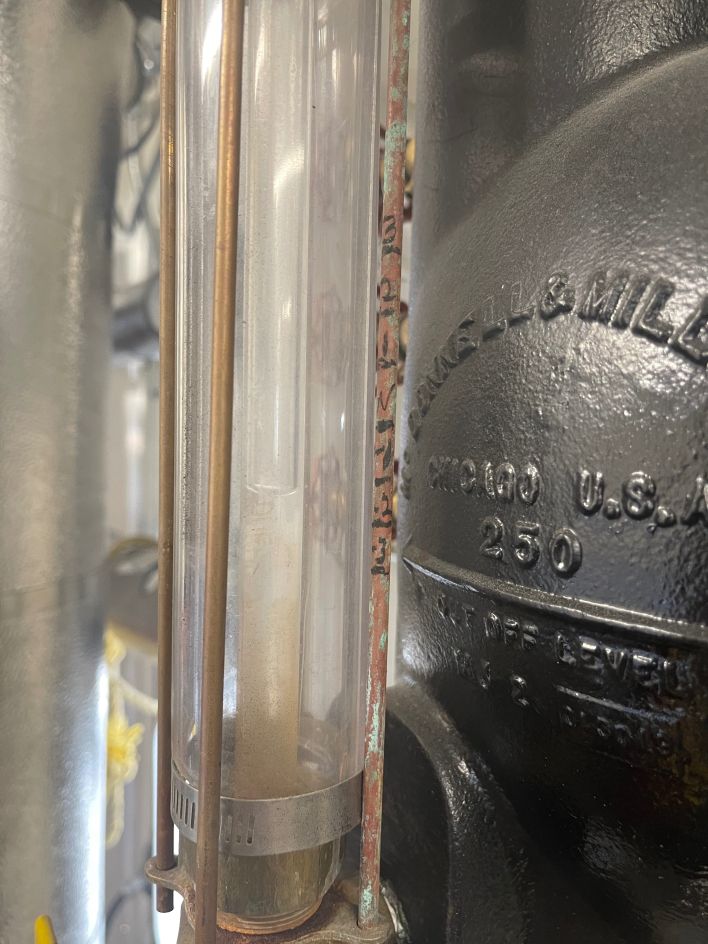
The Window to Boiler Health: Understanding the Sight Glass
In every steam boiler system, there’s one component that quietly ensures safety and reliability—the sight glass. Though small and often overlooked, this transparent gauge gives operators a direct look inside the boiler, showing exactly how much water is present. Without it, even the most advanced boiler could become a serious hazard.
The Purpose of a Sight Glass
A sight glass, also known as a water gauge, is a clear tube or window fitted to the side of a steam boiler. Its role is to display the water level inside the vessel so that operators can confirm the system is running within safe limits.
When the water level falls too low, the metal surfaces inside the boiler can overheat and fail, potentially leading to dangerous pressure events. On the other hand, if the water level rises too high, water can be carried over with the steam, reducing efficiency and damaging connected equipment. The sight glass provides a simple, visual safeguard against both extremes.
Common Types of Sight Glasses
Different boiler systems require different types of sight glasses, each designed for specific conditions.
- Tubular sight glass: A straightforward glass tube that directly shows the water level. It’s inexpensive, easy to install, and ideal for lower-pressure boilers.
- Reflex sight glass: Uses a special prism surface that makes steam appear bright and water appear dark, allowing for quick, clear readings even from a distance.
- Transparent sight glass:Built with two glass plates and a chamber between them, this type provides a clear, accurate view and is suited for high-pressure or heavy-duty boilers.
Each design offers unique advantages, but all serve the same purpose—ensuring the boiler’s water level remains visible and under control.
Installation and Upkeep
Installing a sight glass correctly is essential for both accuracy and safety. It should be mounted vertically and aligned with the boiler’s normal operating water level. The valves at the top and bottom—called gauge cocks—allow the sight glass to be isolated for cleaning or replacement without draining the boiler.
Routine inspection is equally important. Operators should check the glass daily for clarity, cracks, or leaks. Any sign of cloudiness or discoloration could indicate scale buildup or corrosion inside the gauge.
Cleaning should be done regularly using approved solutions to remove mineral deposits. Abrasive materials should be avoided, as scratches can weaken the glass. If the sight glass becomes etched, stained, or damaged, it must be replaced immediately.
A periodic blowdown—briefly opening the drain valve—helps flush out sediment and confirms that the gauge is functioning properly.
Safety Measures
Because sight glasses operate under pressure and high temperature, safety procedures are non-negotiable. Always wear protective equipment when inspecting or cleaning the gauge. Never attempt to tighten fittings or replace glass while the boiler is in service. When replacing components, always install new gaskets and seals to ensure a proper fit and prevent leaks.
Advances in Sight Glass Technology
Modern boiler systems are evolving, and so are sight glasses. Many now feature LED backlighting for easier visibility, even in dim environments. Others incorporate electronic sensors that transmit water level data to digital monitoring systems, allowing for remote supervision and automatic alerts. Materials like borosilicate glass and stainless steel have also improved durability and resistance to thermal shock.
The sight glass may seem like a simple piece of equipment, but it plays a crucial role in maintaining boiler safety and performance. It gives operators a clear, immediate understanding of what’s happening inside the system—something no sensor or gauge can fully replace.
By keeping the sight glass clean, well-maintained, and properly installed, operators ensure not only the efficiency of their steam systems but also the safety of their entire operation. In the world of boilers, clear vision truly means safe operation.
Ready to keep your operations running smoothly, no matter what? Contact Steam Operations Specialists today and discover the peace of mind that comes with the industry’s best boiler operations service.
.jpg?token=6445a83d8d25ab95bafc9ca7f56de5ee)